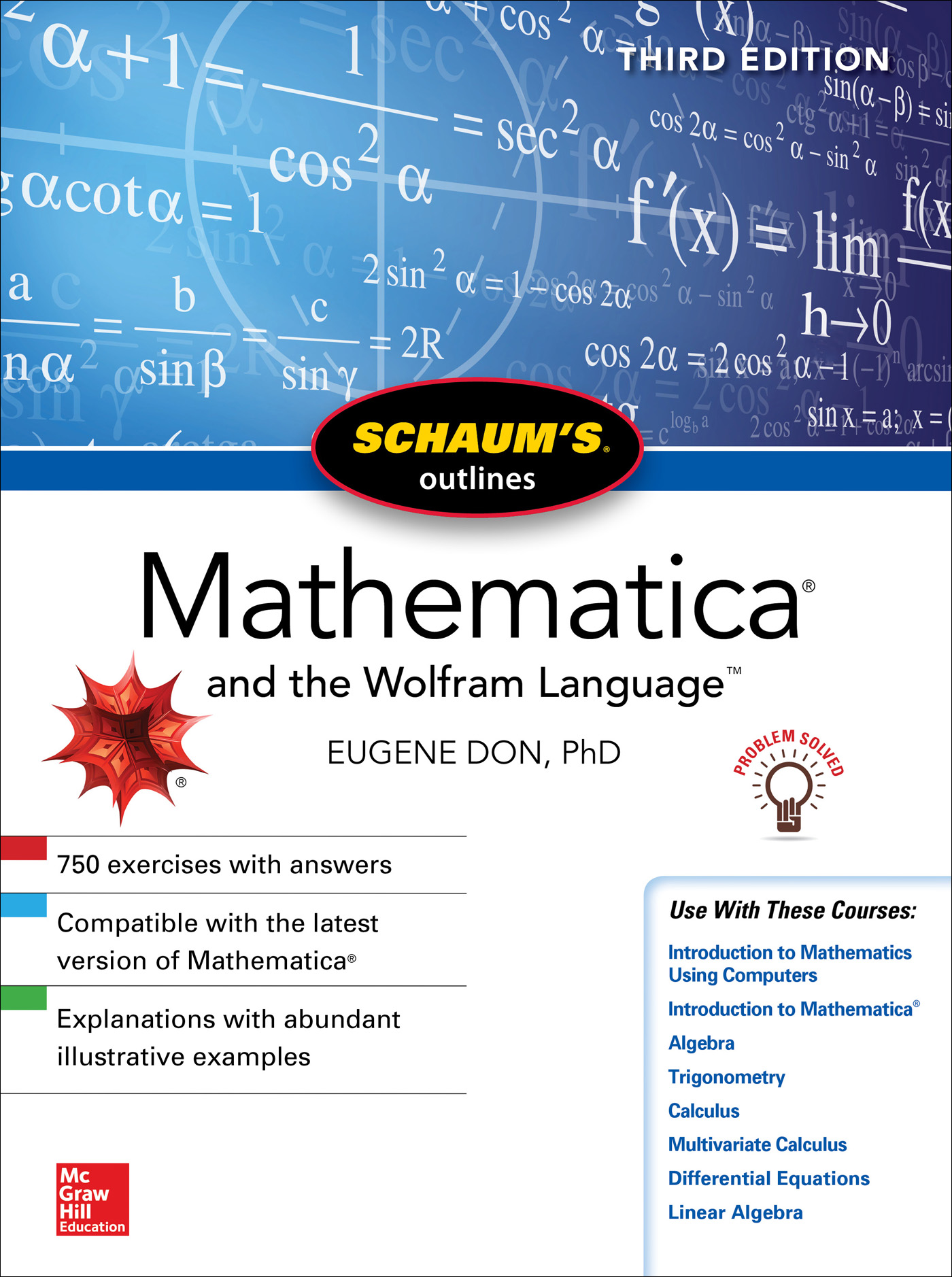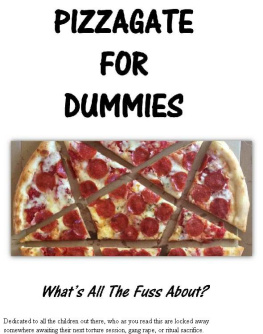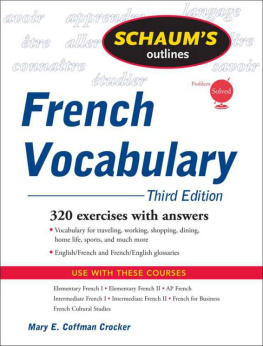Contents
Guide
Page List


Copyright 2019 by McGraw-Hill Education. All rights reserved. Except as permitted under the United States Copyright Act of 1976, no part of this publication may be reproduced or distributed in any form or by any means, or stored in a database or retrieval system, without the prior written permission of the publisher. ISBN: 978-1-26-012073-8
MHID: 1-26-012073-2 The material in this eBook also appears in the print version of this title: ISBN: 978-1-26-012072-1, MHID: 1-26-012072-4. eBook conversion by codeMantra
Version 1.0 All trademarks are trademarks of their respective owners. Rather than put a trademark symbol after every occurrence of a trademarked name, we use names in an editorial fashion only, and to the benefit of the trademark owner, with no intention of infringement of the trademark.
Where such designations appear in this book, they have been printed with initial caps. McGraw-Hill Education eBooks are available at special quantity discounts to use as premiums and sales promotions or for use in corporate training programs. To contact a representative, please visit the Contact Us page at www.mhprofessional.com. EUGENE DON received his BS from Queens College, MS from Columbia University, and PhD in Applied Mathematics and Statistics from the State University of New York at Stony Brook. He has been a member of the Faculty of Mathematics at Queens College of the City University of New York for over 30 years, where he has taught a variety of mathematics courses including a course devoted to learning and applying Mathematica. His area of research is numerical analysis and he is interested in the application of computers to solving mathematics problems.
The Wolfram Spikey Logo, Mathematica and Wolfram Language are all trademarks of Wolfram Research, Inc. (www.wolfram.com) and its affiliated companies, and are used with their permission but not endorsement. TERMS OF USE This is a copyrighted work and McGraw-Hill Education and its licensors reserve all rights in and to the work. Use of this work is subject to these terms. Except as permitted under the Copyright Act of 1976 and the right to store and retrieve one copy of the work, you may not decompile, disassemble, reverse engineer, reproduce, modify, create derivative works based upon, transmit, distribute, disseminate, sell, publish or sublicense the work or any part of it without McGraw-Hill Educations prior consent. You may use the work for your own noncommercial and personal use; any other use of the work is strictly prohibited.
Your right to use the work may be terminated if you fail to comply with these terms. THE WORK IS PROVIDED AS IS. McGRAW-HILL EDUCATION AND ITS LICENSORS MAKE NO GUARANTEES OR WARRANTIES AS TO THE ACCURACY, ADEQUACY OR COMPLETENESS OF OR RESULTS TO BE OBTAINED FROM USING THE WORK, INCLUDING ANY INFORMATION THAT CAN BE ACCESSED THROUGH THE WORK VIA HYPERLINK OR OTHERWISE, AND EXPRESSLY DISCLAIM ANY WARRANTY, EXPRESS OR IMPLIED, INCLUDING BUT NOT LIMITED TO IMPLIED WARRANTIES OF MERCHANTABILITY OR FITNESS FOR A PARTICULAR PURPOSE. McGraw-Hill Education and its licensors do not warrant or guarantee that the functions contained in the work will meet your requirements or that its operation will be uninterrupted or error free. Neither McGraw-Hill Education nor its licensors shall be liable to you or anyone else for any inaccuracy, error or omission, regardless of cause, in the work or for any damages resulting therefrom. McGraw-Hill Education has no responsibility for the content of any information accessed through the work.
Under no circumstances shall McGraw-Hill Education and/or its licensors be liable for any indirect, incidental, special, punitive, consequential or similar damages that result from the use of or inability to use the work, even if any of them has been advised of the possibility of such damages. This limitation of liability shall apply to any claim or cause whatsoever whether such claim or cause arises in contract, tort or otherwise. To my wife, Benay,
whose patience and understanding
made this book possible.
Preface
This book is designed to help students and professionals who use mathematics in their daily routine learn
Mathematica, a computer system designed to perform complex mathematical calculations. My approach is simple: learn by example. Along with easy to read descriptions of the most widely used commands, I have included a collection of over 750 examples and solved problems, each specifically designed to illustrate an important feature of the
Mathematica software.
No attempt has been made to discuss all the capabilities of Mathematica. As this is a book designed for first-time users at the undergraduate level, I have included those commands and options that are most commonly used in algebra, trigonometry, calculus, differential equations, and linear algebra. Most examples and solved problems are short and to the point. Comments have been included, where appropriate, to clarify what might be confusing to the reader. The reader is encouraged not only to replicate the output shown in the text, but to make modifications and investigate the resulting effect upon the output. I have found this to be the most effective way to learn the syntax and capabilities of this truly unique program.
Over the years Mathematica has undergone a significant number of changes. This third edition incorporates all the changes in the command descriptions, examples, and solved problems. In addition, a comprehensive list of commands used in the book together with their descriptions is conveniently located in the . The first three chapters serve as an introduction to the syntax and style of Mathematica. The structure of the remainder of the book is such that the reader need only be concerned with those chapters of interest to him or her. If, on occasion, a command is encountered that has been discussed in a previous chapter, the index may be used to conveniently locate the commands description.
Without a doubt you will be impressed with Mathematicas capabilities. It is my sincere hope that you will use the power built into this software to investigate the wonders of mathematics in a way that would have been impossible just a few years ago. The manuscript for this book was proofread several times and all the examples and solved problems have been checked for accuracy. If you should come across a mistake that has not been caught, or would like to share your thoughts about the book, please feel free to send an e-mail to . EUGENE DON
Contents

Getting Acquainted
1.1 Notation and Conventions
Mathematica is a language that is best learned by experimentation. Therefore, the reader is urged to try as many examples and problems as possible and experiment by changing options and parameters.
In fact, this chapter may be considered a tutorial for those readers who want to get their hands on Mathematica right away. New commands are introduced with a  bullet, and options associated with them are bulleted with a symbol for easy reference. In keeping with Mathematicas conventions, all commands and instructions will be written in bold face type and
bullet, and options associated with them are bulleted with a symbol for easy reference. In keeping with Mathematicas conventions, all commands and instructions will be written in bold face type and







 Copyright 2019 by McGraw-Hill Education. All rights reserved. Except as permitted under the United States Copyright Act of 1976, no part of this publication may be reproduced or distributed in any form or by any means, or stored in a database or retrieval system, without the prior written permission of the publisher. ISBN: 978-1-26-012073-8
Copyright 2019 by McGraw-Hill Education. All rights reserved. Except as permitted under the United States Copyright Act of 1976, no part of this publication may be reproduced or distributed in any form or by any means, or stored in a database or retrieval system, without the prior written permission of the publisher. ISBN: 978-1-26-012073-8
 bullet, and options associated with them are bulleted with a symbol for easy reference. In keeping with Mathematicas conventions, all commands and instructions will be written in bold face type and
bullet, and options associated with them are bulleted with a symbol for easy reference. In keeping with Mathematicas conventions, all commands and instructions will be written in bold face type and